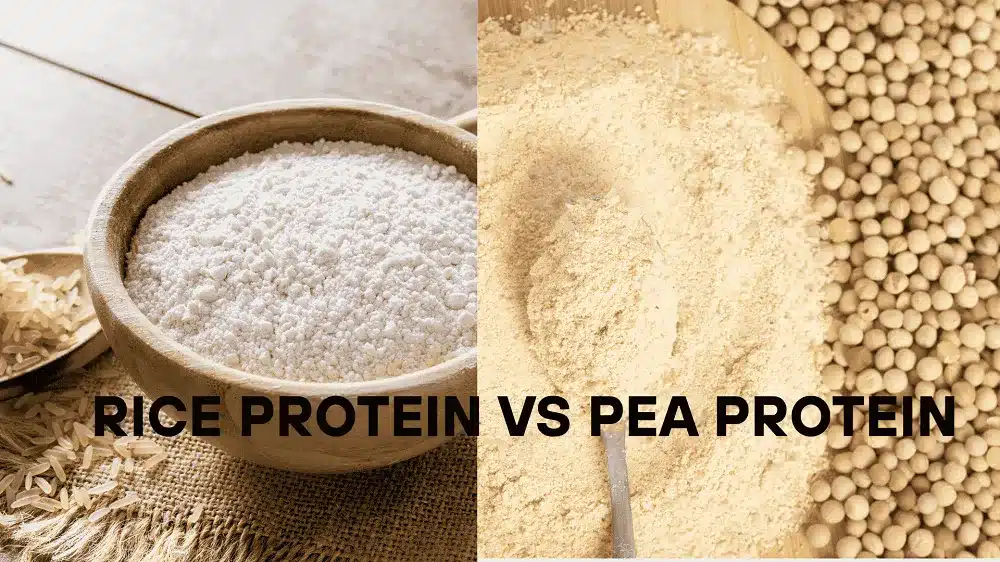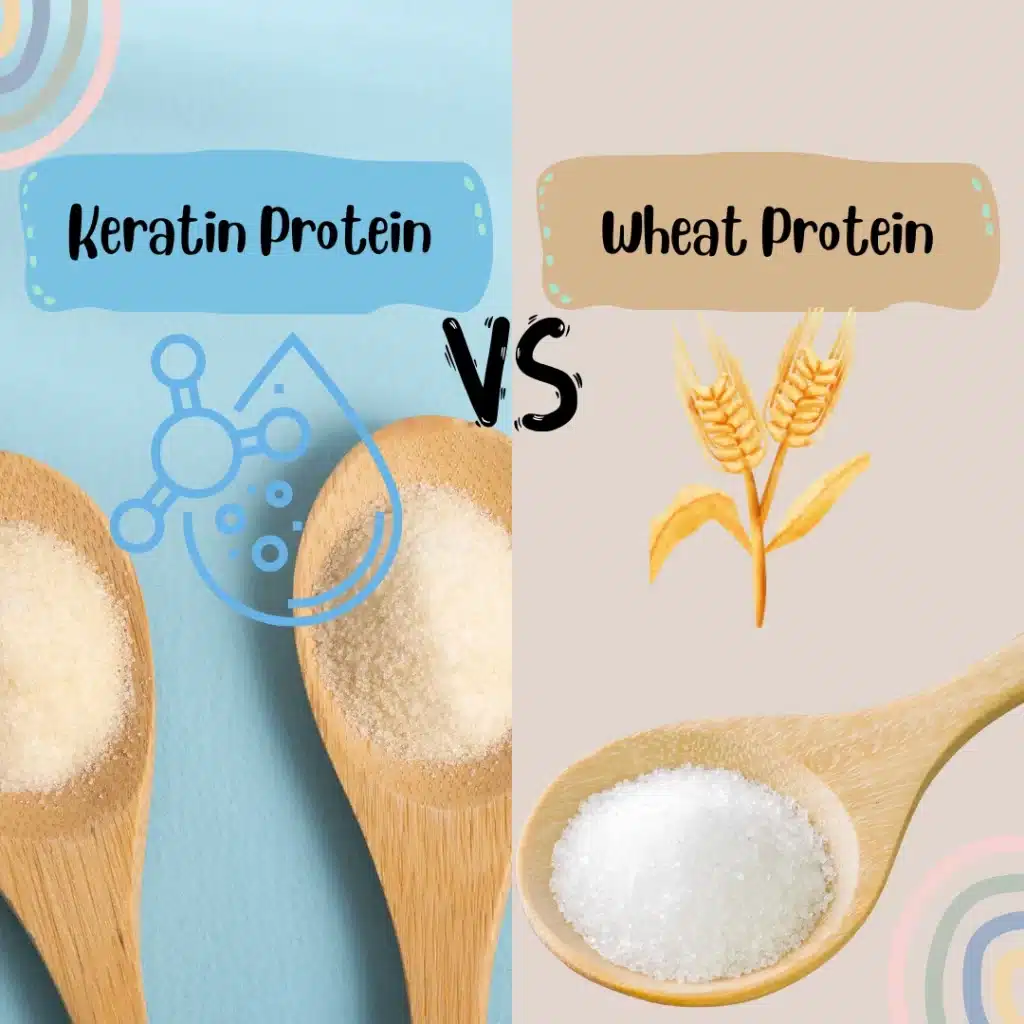Plant-based protein supplements are gaining popularity, with rice protein vs pea protein leading the pack for vegan, allergen-free nutrition. As the plant-based protein market grows toward $20.8 billion by 2028, choosing the right protein can support muscle growth, weight management, and overall health. As a leading supplier of food supplement ingredients and OEM solutions, we’re here to compare rice protein vs pea protein, covering their sources, benefits, and uses. This guide uses simple language, science-backed facts, and practical tips to help you pick the best protein for your goals, whether it’s building muscle or staying healthy.
Understanding Plant-Based Proteins
Proteins are the building blocks of your body, helping muscles grow, tissues repair, and energy stay high. Plant-based proteins, like rice protein vs pea protein, are sustainable alternatives to animal proteins (e.g., whey). They’re vegan-friendly, often hypoallergenic, and eco-conscious.

Why Plant-Based?
- Supports vegan or vegetarian diets.
- Lower environmental impact than animal proteins.
- Often easier to digest for sensitive stomachs.
Complete vs. Incomplete Proteins: A complete protein has all nine essential amino acids your body can’t make. Most plant proteins are incomplete, but combining them (e.g., rice and pea) can make them complete.
Rice Protein: Sources and Characteristics
Rice protein comes from brown rice, processed to isolate the protein using enzymes. It’s a popular choice for its mild flavor and allergen-free profile.
Sources:
- Made from whole brown rice grains.
- Minimal in regular rice dishes, so supplements provide a concentrated dose (70–80% protein).
Protein Type:
- Incomplete protein, low in lysine but high in methionine and cysteine.
- Needs pairing with lysine-rich foods (e.g., legumes) for completeness.
Key Features:
- Hypoallergenic, great for those with food sensitivities.
- Smooth texture, ideal for shakes, smoothies, or baking.
- Affordable and widely available in powders or bars.
Pea Protein: Sources and Characteristics
Pea protein is extracted from yellow split peas through mechanical separation. It’s a favorite for its high protein content and muscle-building potential.
Sources:
- Sourced from yellow peas, a sustainable crop.
- Not found in large amounts in whole peas, making supplements key (80–85% protein).
Protein Type:
- Nearly complete protein, rich in lysine and branched-chain amino acids (BCAAs) like leucine.
- Lower in methionine, but closer to complete than rice protein.
Key Features:
- Highly digestible, with a PDCAAS (digestibility score) of 0.89.
- Slightly earthy taste, versatile for sweet or savory recipes.
- Supports muscle growth and satiety.
Comparing Rice Protein vs Pea Protein
Here’s a comparison table to highlight differences in rice protein vs pea protein:
| Aspect | Rice Protein | Pea Protein |
|---|---|---|
| Source | Brown rice | Yellow split peas |
| Protein Type | Incomplete (low lysine) | Near-complete (low methionine) |
| Digestibility (PDCAAS) | 0.50–0.70 | 0.89 |
| Best For | Sensitive stomachs, baking | Muscle building, weight loss |
| Allergens | Rare (rice allergies) | Possible (legume allergies) |
| Taste/Texture | Smooth, mild | Earthy, slightly grainy |
Science Says: A 2013 study in Nutrition Journal found pea protein matched whey protein for muscle growth in athletes, thanks to its BCAAs. Rice protein, while less effective alone, supports muscle recovery when combined with other proteins, per a 2018 Journal of the International Society of Sports Nutrition study. Blending rice protein vs pea protein creates a complete amino acid profile, rivaling animal proteins.
Benefits and Applications
Both rice protein vs pea protein offer unique benefits, making them ideal for different goals.
Rice Protein Benefits
- Muscle Recovery: Provides methionine for tissue repair, great for post-workout.
- Digestive Health: Gentle on the stomach, ideal for those with allergies or sensitivities (how digestible is rice protein?).
- Weight Management: Low-calorie, supports satiety for healthy diets (is rice protein powder good for you?).
Pea Protein Benefits
- Muscle Building: High in BCAAs, effective for muscle growth (does pea protein build muscle?), per 2015 Journal of Sports Medicine study.
- Heart Health: Rich in arginine, which supports blood flow.
- Weight Loss: Increases fullness, aiding weight control (is pea protein better for weight loss?).
Combined Benefits
Blending rice protein vs pea protein is a game-changer (are split peas and rice a complete protein?):
- Combines lysine (pea) and methionine (rice) for a complete protein.
- Supports muscle growth, recovery, and weight management.
- Popular in vegan protein powders for athletes and health-conscious consumers.
Applications: Used in protein powders, bars, meal replacements, and shakes. Ideal for:
- Athletes building muscle (does rice protein build muscle?).
- Vegans seeking complete proteins.
- Weight loss diets needing filling, low-calorie options.
Sourcing High-Quality Rice and Pea Protein
Quality matters for effective rice protein vs pea protein supplements. As a trusted supplier of food supplement ingredients and OEM solutions, we ensure:
- Purity: GMP-certified rice and pea protein powders with 80–85% protein content.
- Sustainability: Organic, non-GMO options from eco-friendly sources.
- Allergen-Free: Free from common allergens, with third-party testing for safety.
- OEM Services: Custom blends (e.g., rice protein vs pea protein with P5P zinc and magnesium), packaging, and global compliance.
Why Choose Us? Our high-quality raw materials help brands create top-tier vegan protein supplements for the $20.8 billion market. We support startups and established companies with tailored formulations.
Dosage and Usage Guidelines
Here’s how to use rice protein vs pea protein effectively, based on ISSN guidelines:
| Protein Type | Recommended Dosage | Best Practices |
|---|---|---|
| Rice Protein | 20–30 g/day (muscle); 10–20 g/day (general) | Mix in smoothies or bake into bars |
| Pea Protein | 20–30 g/day (athletes); 10–15 g/day (daily) | Blend in shakes or savory recipes |
Tips for Use:
- Timing: Post-workout for muscle recovery or morning for energy (can I eat pea protein every day?). Daily use is safe for most.
- Mixing: Blend with water, plant milk, or smoothies. Rice protein is smoother; pea protein may need flavor masking.
- Combinations: Mix rice and pea protein for a complete amino acid profile. Add P5P zinc and magnesium for enhanced recovery (available in our OEM blends).
Potential Side Effects and Precautions
Both rice protein vs pea protein are safe for most, but here’s what to know:
Rice Protein
- Side Effects: Rare digestive upset; rice allergies are uncommon (is rice protein inflammatory? No evidence suggests it’s inflammatory).
- Precautions: Safe for daily use, but consult a doctor for kidney issues or high-protein diets (can I eat pea protein every day?).
Pea Protein
- Side Effects: Possible bloating for sensitive stomachs (what is the drawback of pea protein?). Rare legume allergies.
- Precautions: Avoid if allergic to peas or legumes. Start with small doses to test tolerance.
General Advice: Consult a doctor if pregnant, breastfeeding, or managing conditions like kidney disease. Our high-purity proteins minimize risks with clean, tested ingredients.
Comparison Table: Practical Considerations
This table helps you choose between rice protein vs pea protein:
| Factor | Rice Protein | Pea Protein | Best Choice |
|---|---|---|---|
| Muscle Building | Moderate | Excellent (BCAAs) | Pea for athletes |
| Digestibility | Gentle, hypoallergenic | High but may cause bloating | Rice for sensitive stomachs |
| Taste | Mild, smooth | Earthy, grainy | Rice for versatility |
| Cost | Affordable | Slightly pricier | Rice for budget |
| Sustainability | Good | Excellent (low water use) | Pea for eco-focus |
Key Takeaway: Choose pea protein for muscle growth and weight loss, rice protein for sensitive digestion, or a blend for complete nutrition.
Conclusion
Rice protein vs pea protein offers unique benefits for vegan, health-conscious consumers. Rice protein is gentle and versatile, while pea protein excels for muscle building and satiety. Blending them creates a complete protein, perfect for athletes and everyday use. As a leading supplier of rice protein vs pea protein raw materials and OEM solutions, we provide GMP-certified, sustainable ingredients to help brands create top-tier supplements. Ready to launch your vegan protein line? Contact us to source premium rice protein vs pea protein or develop custom formulations for the $20.8 billion market.
FAQs
What’s better, pea protein or rice protein?
Pea protein is better for muscle building due to BCAAs; rice protein suits sensitive stomachs (rice protein vs pea protein). Blend for complete protein.
Which is the healthiest type of protein powder?
Both are healthy, but pea protein’s higher digestibility (PDCAAS 0.89) and BCAA content make it slightly better for athletes. Rice is gentler for allergies (is pea better than rice?).
What’s better than pea protein?
Blends of pea and rice protein outperform pea alone by providing a complete amino acid profile, rivaling whey (are split peas and rice a complete protein?).
Is pea protein better for weight loss?
Yes, pea protein’s high satiety helps with weight loss by reducing hunger, per a 2016 Food & Nutrition Research study. Rice protein also supports weight management.
References
- National Institutes of Health. (2023). Dietary Supplements for Exercise and Athletic Performance. https://ods.od.nih.gov/factsheets/ExerciseAndAthleticPerformance-HealthProfessional/
- Joy, J. M., et al. (2013). “The effects of pea protein vs. whey protein on muscle thickness and strength.” Nutrition Journal, 12(1), 86. doi:10.1186/1475-2891-12-86
- Gorissen, S. H. M., et al. (2018). “Protein content and amino acid composition of commercially available plant-based protein isolates.” Journal of the International Society of Sports Nutrition, 15(1), 41. doi:10.1186/s12970-018-0244-0
- Babault, N., et al. (2015). “Pea proteins oral supplementation promotes muscle thickness gains.” Journal of Sports Medicine, 3(1), 3–10. doi:10.1155/2015/806485
- Dahl, W. J., et al. (2016). “Pea protein and satiety in humans.” Food & Nutrition Research, 60, 32630. doi:10.3402/fnr.v60.32630



